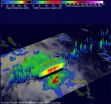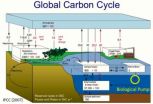(Press-News.org) DETROIT – A molecular substance that occurs naturally in humans and rats was found to "substantially reduce" brain damage after an acute stroke and contribute to a better recovery, according to a newly released animal study by researchers at Henry Ford Hospital.
The study, published online before print in Stroke, the journal of the American Heart Association, was the first ever to show that the peptide AcSDKP provides neurological protection when administered one to four hours after the onset of an ischemic stroke.
This type of a stroke occurs when an artery to the brain is blocked by a blood clot, cutting off oxygen and killing brain tissue with crippling or fatal results.
"Stroke is a leading cause of death and disability worldwide," said Li Zhang, M.D., a researcher at Henry Ford and lead author of the study. "Our data showed that treatment of acute stroke with AcSDKP alone or in combination with tPA substantially reduced neurovascular damage and improved neurological outcome."
Commonly called a "clot-buster," tPA, or tissue plasminogen activator , is the only FDA-approved treatment for acute stroke.
However, tPA must be given shortly after the onset of stroke to provide the best results. It also has the potential to cause a brain hemorrhage.
The Henry Ford study found that this narrow "therapeutic window" is extended for up to four hours after stroke and the therapeutic benefit of tPA is amplified when tPA is combined with AcSDKP. Further, the researchers discovered that AcSDKP alone is an effective treatment if given up to one hour after the brain attack.
The researchers tested the actions of both substances on laboratory rats in which acute stroke had been induced. It was already known that the peptide AcSDKP provides anti-inflammatory effects and helps protect the heart when used to treat a variety of cardiovascular diseases. The Henry Ford scientists reasoned that the peptide may have similar neurological benefits.
Significantly, they found that AcSDKP can readily cross the so-called "blood brain barrier" that blocks other neuroprotective substances.
A battery of behavioral tests was given to the lab rats both before and after stroke was induced to measure the effects of AcSDKP administered alone one hour after onset and combined with tPA four hours after stroke.
Besides finding that both methods "robustly" decreased neurological damage associated with stroke, they did so without increasing the incidence of brain hemorrhage or the formation of additional blood clots.
"With the increased use of clot-busting therapy in patients with acute stroke, both the safety and effectiveness of the combined treatment shown in our study should encourage the development of clinical trials of AcSDKP with tPA," Dr. Zhang says.
INFORMATION:
Study funding: NIH RO1 NS 079612 (ZGZ)
Substance naturally found in humans is effective in fighting brain damage from stroke
2014-03-11
ELSE PRESS RELEASES FROM THIS DATE:
NASA eyes 2 tropical cyclones east of Australia
2014-03-11
NASA's Aqua and TRMM satellites have been providing rainfall data, cloud heights and temperature and other valuable information to forecasters at the Joint Typhoon Warning Center as they track Tropical Cyclones Hadi and Lusi in the South Pacific.
NASA's Aqua satellite captured both storms in one infrared image on March 10 at 14:47 UTC/10:47 a.m. EST. At that time, Hadi was near the east Queensland coast while Lusi was several hundred miles north of New Caledonia. The Atmospheric Infrared Sounder or AIRS instrument captured infrared data that was used to create a false-colored ...
Alps to Appalachia; submarine channels to Tibetan plateau; Death Valley to arctic Canada
2014-03-11
Boulder, Colo., USA – On 27 Feb. and 6 Mar. 2014, GSA Bulletin published 11 articles online ahead of print, including two that are open access: "O2 constraints from Paleoproterozoic detrital pyrite and uraninite" and "Sediment transfer and deposition in slope channels: Deciphering the record of enigmatic deep-sea processes from outcrop." Other articles cover geological features in the Alps; the Appalachians; Death Valley; India; the Himalaya; the Columbia River Basalt Province; San Simeon, California; Kaua'i, Hawai'i; and artic Canada.
GSA Bulletin articles published ...
Scientists from Penn and CHOP confirm link between missing DNA and birth defects
2014-03-11
In 2010, scientists in Italy reported that a woman and her daughter showed a puzzling array of disabilities, including epilepsy and cleft palate. The mother had previously lost a 15-day-old son to respiratory failure, and the research team noted that the mother and daughter were missing a large chunk of DNA on their X chromosome. But the researchers were unable to definitively show that the problems were tied to that genetic deletion.
Now a team from the University of Pennsylvania and The Children's Hospital of Philadelphia has confirmed that those patients' ailments ...
Lessons learned managing geriatric patients offer framework for improved care
2014-03-11
A large team of experts led by a Johns Hopkins geriatrician reports that efforts to improve the care of older adults and others with complex medical needs will fall short unless public policymakers focus not only on preventing hospital readmission rates, but also on better coordination of community-based "care transitions." Lessons learned from managing such transitions for older patients, they say, may offer a framework for overall improvement.
Nationwide, some 22 percent of older adults experience so-called care transitions annually, moving from and among hospitals, ...
Change happens: New maps reveal land cover change over 5 years across North America
2014-03-11
This news release is available in French and Spanish. Montreal, 11 March 2014—A new set of maps featured in the CEC's North American Environmental Atlas depicts land cover changes in North America's forests, prairies, deserts and cities, using satellite images from 2005 and 2010. These changes can be attributed to forest fires, insect infestation, urban sprawl and other natural or human-caused events. Produced by the North American Land Change Monitoring System (NALCMS), a trinational collaborative effort facilitated by the CEC, these maps and accompanying data can ...
AGU journal highlights -- March 11, 2014
2014-03-11
The following highlights summarize research papers that have been recently published in Geophysical Research Letters (GRL), Journal of Geophysical Research-Atmospheres (JGR-D), and Journal of Geophysical Research-Earth Surface (JGR-F).
In this release:
Cassini sheds light on Titan's second largest lake, Ligeia Mare
Tectonic stress feedback loop explains U-shaped glacial valleys
Measuring the effect of water vapor on climate warming
First assessment of noctilucent cloud variability at midlatitudes
Modeling surface circulation patterns in the Gulf of Mexico
New ...
Ocean food web is key in the global carbon cycle
2014-03-11
(Santa Barbara, Calif.) — Nothing dies of old age in the ocean. Everything gets
eaten and all that remains of anything is waste. But that waste is pure gold to
oceanographer David Siegel, director of the Earth Research Institute at UC Santa
Barbara.
In a study of the ocean's role in the global carbon cycle, Siegel and his colleagues used those nuggets to their advantage. They incorporated the lifecycle of phytoplankton
and zooplankton — small, often microscopic animals at the bottom of the food chain —into a novel mechanistic model for assessing the global ocean carbon ...
Lack of sleep, stress describe a mother's experience after child's ALL treatment
2014-03-11
"It's a whole new cancer world" and "I don't remember what it's like to have sleep" were the most common themes of mothers interviewed by University of Colorado Cancer Center researchers during the maintenance period after a child's treatment for acute lymphoblastic leukemia (ALL). Results of this qualitative study are published in a recent issue of the Journal of Pediatric Nursing. A second study, published today in the Journal of Pediatric Oncology Nursing, shows the quantitative differences between stress, anxiety and depression in these parents of chronically ill children ...
NREL examines solar policy pathways for states
2014-03-11
The Energy Department's National Renewable Energy Laboratory (NREL) has published a report that aligns solar policy and market success with state demographics. By organizing the 48 contiguous states into four peer groups based on shared non-policy characteristics, the NREL research team was able to contextualize the impact of various solar policies on photovoltaic (PV) installations.
"Although it is widely accepted that solar policies drive market development, there has not been a clear understanding of which policies work in which context," lead author Darlene Steward ...
Repeat ED visits for opioid overdose raise risk of hospitalization, respiratory failure
2014-03-11
Patients brought to hospital emergency departments (EDs) more than once in a year for treatment of opioid drug overdoses are more likely to be hospitalized for overdose and to need respiratory support with a mechanical ventilator. A study conducted by Massachusetts General Hospital (MGH) investigators also identified factors that increased the risk of subsequent overdoses requiring emergency department visits.
"To our knowledge this is the first study that has identified risk factors for repeat ED visits for opioid overdose," says Kohei Hasegawa, MD, MPH, MGH Department ...

